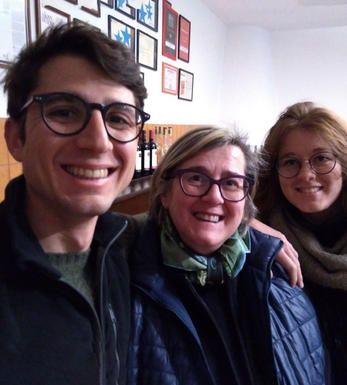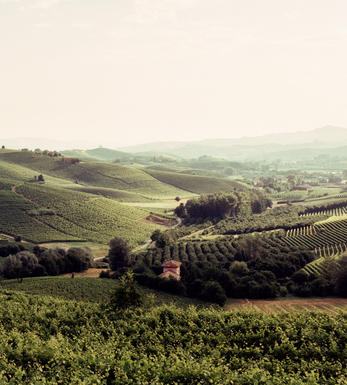
2019 Barolo, Bricco Ambrogio, Bruna Grimaldi, Piedmont, Italy

Critics reviews
The 2019 Barolo Bricco Ambrogio is the most nuanced of these three wines from Bruna Grimaldi. It offers plenty of impact and overt richness, but also quite a bit of aromatic nuance to balance things out. Give the tannins a bit of time to soften.
Drink 2023 - 2029
Antonio Galloni, Vinous.com (January 2023)
The Bruna Grimaldi 2019 Barolo Bricco Ambrogio (with 4,500 bottles made) boasts a very vibrant and lively garnet colour that is slightly on the darker side of your standard Nebbiolo. This cru site in Roddi tends to make accessible Barolos, and you could say the same for this edition. The wild card, however, is the excellent 2019 vintage, which gives this wine more abundant fruit density and structure. Generally speaking, you get a bigger bolder wine this year.
Drink 2024 - 2038
Monica Larner, Wine Advocate (August 2023)
A very classic estate at ease with an austere vintage such as 2019. This Bricco Ambrogio is dark ruby in colour and dark in aroma, ranging from black cherry to wild berries, with a soapy rosewater scent surrounded by spice. The palate shows a relatively light frame with soft acidity at first, then vibrant and juicy with chewy tannins. There is some stickiness due to its youth but the finish is very polished.
Drink 2023 - 2045
Aldo Fiordelli, Decanter.com (February 2023)
About this WINE

Cantina Bruna Grimaldi
In the 1950s, Giacomo Grimaldi set his family on a quality winemaking path. This saw him move away from bulk production, introduce pioneering viticultural practices, nurture vineyard wellbeing and introduce vintage bottlings. In 1990, the winery passed into the hands of his daughter Bruna, after whom the cantina was consequently renamed.
The Grimaldi family have deep roots in the Langhe; their original vineyards link the ancient hills between Grinzane Cavour and Serralunga d’Alba. Over the generations, their holdings have expanded across the northern and eastern areas of the Barolo area, totalling 14 hectares, and they’ve been certified organic since 2013. The winery is based in the north-east corner of Barolo, in the cru of Grinzane Cavour, and today the property is run by Bruna’s two children, Simone and Martina.

Barolo
Located due south of Alba and the River Tanaro, Barolo is Piedmont's most famous wine DOCG (Denominazione di Origine Controllata e Garantita), renowned for producing Italy's finest red wines from 100 percent Nebbiolo.
Its red wines were originally sweet, but in 1840 the then extant Italian monarchy, the House of Savoy, ordered them to be altered to a dry style. This project was realised by French oenologist Louis Oudart, whose experience with Pinot Noir had convinced him of Nebbiolo's potential. The Barolo appellation was formalised in 1966 at around 1,700 hectares – only a tenth of the size of Burgundy, but almost three times as big as neighbouring Barbaresco.
Upgraded to DOCG status in 1980, Barolo comprises two distinct soil types: the first is a Tortonian sandy marl that produces a more feminine style of wine and can be found in the villages of Barolo, La Morra, Cherasco, Verduno, Novello, Roddi and parts of Castiglione Falletto. The second is the older Helvetian sandstone clay that bestows the wines with a more muscular style. This can be found in Monforte d'Alba, Serralunga d'Alba, Diano d'Alba, Grinzane Cavour and the other parts of Castiglione Falletto. Made today from the Nebbiolo clones Lampia, Michet and Rosé, Barolo has an exceptional terroir with almost every village perched on its own hill. The climate is continental, with an extended summer and autumn enabling the fickle Nebbiolo to achieve perfect ripeness.
Inspired by the success of modernists such as Elio Altare, there has been pressure in recent years to reduce the ageing requirements for Barolo; this has mostly been driven by new producers to the region, often with no Piedmontese viticultural heritage and armed with their roto-fermenters and barriques, intent on making a fruitier, more modern style of wine.
This modern style arguably appeals more to the important American market and its scribes, but the traditionalists continue to argue in favour of making Barolo in the classic way. They make the wine in a mix of epoxy-lined cement or stainless-steel cuves, followed by extended ageing in 25-hectoliter Slavonian botte (barrels) to gently soften and integrate the tannins. However, even amongst the traditionalists there has been a move, since the mid-1990s, towards using physiologically (rather than polyphenolically) riper fruit, aided by global warming. Both modernist and traditional schools can produce exceptional or disappointing wines.
Recommended traditionalist producers:
Giacomo Borgogno, Giacomo Conterno, Bruno Giacosa, Elio Grasso, Marcarini, Bartolo Mascarello and Giuseppe Mascarello.
Recommended nmdernist producers:
Azelia, Aldo Conterno, Luciano Sandrone, Paolo Scavino and Roberto Voerzio

Nebbiolo
Nebbiolo is the grape behind the Barolo and Barbaresco wines and is hardly ever seen outside the confines of Piedmont. It takes its name from "nebbia" which is Italian for fog, a frequent phenomenon in the region.
A notoriously pernickety grape, it requires sheltered south-facing sites and performs best on the well-drained calcareous marls to the north and south of Alba in the DOCG zones of Barbaresco and Barolo.
Langhe Nebbiolo is effectively the ‘second wine’ of Piedmont’s great Barolo & Barbarescos. This DOC is the only way Langhe producers can declassify their Barolo or Barbaresco fruit or wines to make an early-drinking style. Unlike Nebbiolo d’Alba, Langhe Nebbiolo can be cut with 15% other red indigenous varieties, such as Barbera or Dolcetto.
Nebbiolo flowers early and ripens late, so a long hang time, producing high levels of sugar, acidity and tannins; the challenge being to harvest the fruit with these three elements ripe and in balance. The best Barolos and Barbarescos are perfumed with aromas of tar, rose, mint, chocolate, liquorice and truffles. They age brilliantly and the very best need ten years to show at their best.


Buying options
Add to wishlist
Description
The Bricco Ambrogio is a single cru wine, found in the Roddi commune in the north of Barolo, which was purchased by Bruna and Franco in 2006. The parcel is narrow and long, with its own warm but shaded microclimate. Here, grapes can develop healthy skin and aromatics without suffering from sunburn. Such a balanced vineyard has unsurprisingly produced a wonderfully harmonious wine, with soft generous fruit on the nose and an unmistakable brightness to the palate – this just feels like sunshine.
There is so much detail and complexity on the finish, and still a serious grip from perfectly ripened tannins. Even more seductive than the 2016 was at this stage, this wine has all the hallmark characteristics of the quality we can expect from 2019s.
Drink 2027 - 2048
Berry Bros. & Rudd
wine at a glance
Delivery and quality guarantee